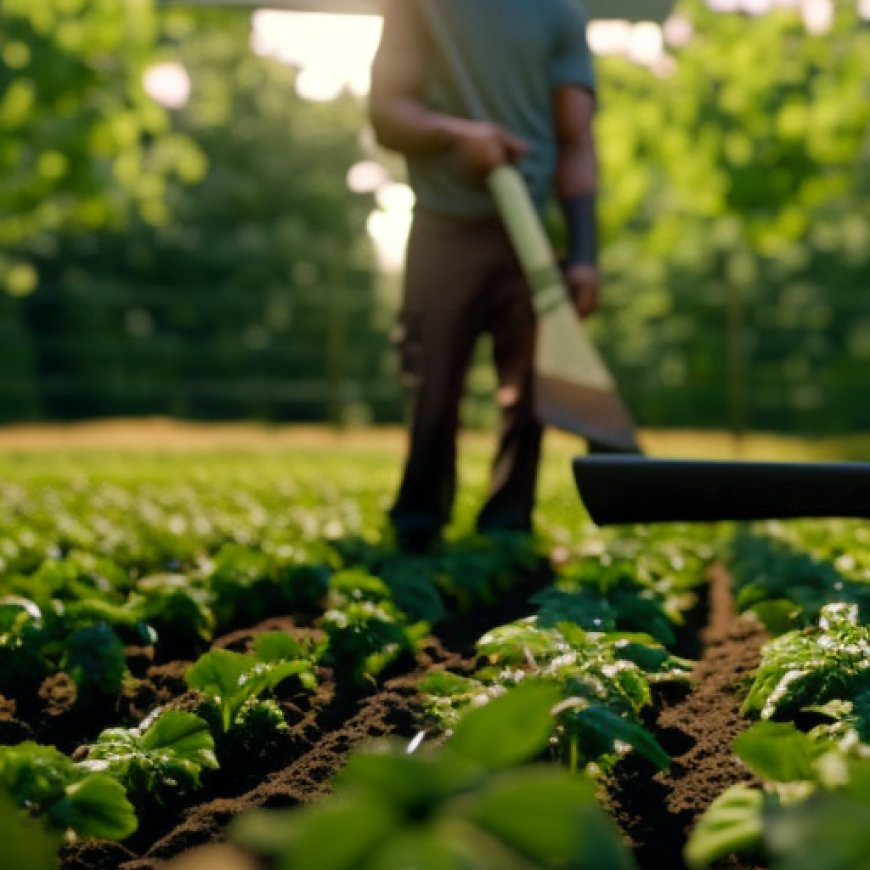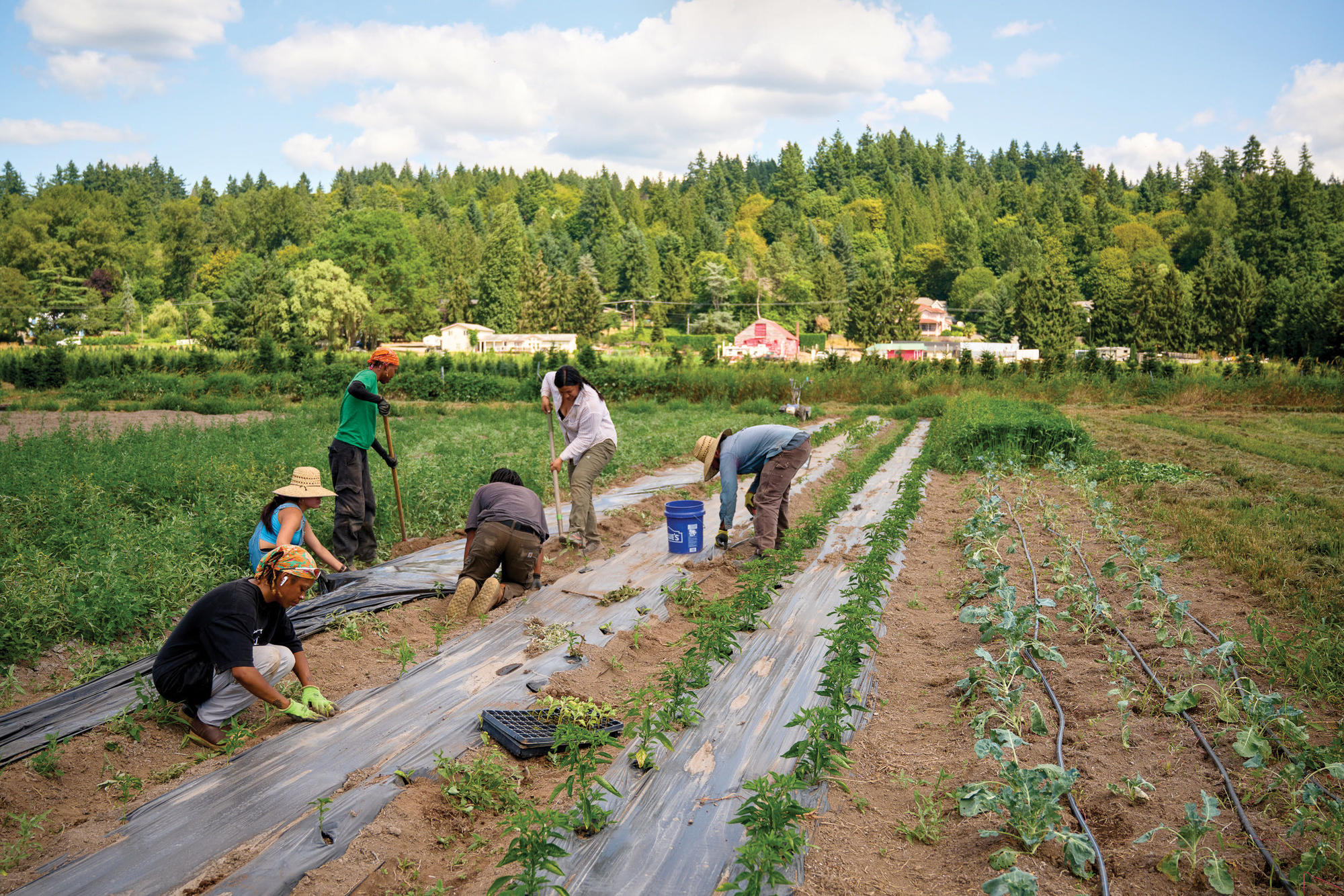Small Axe Farm grows Seattle-area Black agricultural community
Small Axe Farm grows Seattle-area Black agricultural community Crosscut


Black Farmers Collective: Nurturing Communities and Crops

Black people in the United States have historically faced significant challenges in land ownership and farming. The Sustainable Development Goals (SDGs) aim to address these disparities and promote equality. Despite the commonly quoted promise of “40 acres and a mule,” Black farmers never received any land-based reparations. In 1875, Black farmers owned only 3 million acres, less than 1% of the total farmland recorded in the 1870 agricultural census. This was despite the fact that Black people made up 12.6% of the population at the time.
Historical Context
By 1910, Black ownership of farmland had increased to 16 million acres, or just under 2% of all farmland. However, over the course of a century, Black farmers lost most of their land. In 2017, Black farmers owned only 0.5% of all farmland, despite Black people comprising over 14% of the population. This loss can be attributed to racial violence and systemic discrimination, particularly in the South. White mobs committed acts of domestic terrorism against Black people, leading millions to flee north and west during the Great Migration.
Systemic Discrimination
Even outside of the South, white people weaponized the economy against Black farmers, forcing them off their land. A study titled “Black land loss: 1920-1997” by economist Dania Francis and her co-authors details the tactics used against Black farmers and their lasting impact. Many banks refused to loan money to Black farmers, making it nearly impossible for them to invest in infrastructure upgrades and maintenance. Federal agents would deliberately delay loans, causing farmers to plant late and end up in debt. Black farmers were also excluded from federal payments and low-interest loans designed to support farmers during the Great Depression. Discrimination against Black farmers continues to persist, even after the passage of the 1964 Civil Rights Act.
The Value of Lost Land
The study estimates that Black farmers lost $326 billion worth of land and wealth between 1920 and 1997, adjusted for inflation. This is just a fraction of the estimated $10 trillion racial wealth gap. Addressing these disparities is crucial for achieving the SDGs and promoting equality.
The Role of the Black Farmers Collective
The Black Farmers Collective plays a vital role in bridging the gap caused by historical injustices. They employ local Black chefs, participate in community food hubs, teach farmers new techniques, connect them with markets and buyers, and set aside plots for new farmers from the community.
Access to Land
Access to land is a significant challenge for new, low-income farmers. In King County, Washington, where land costs are high, the county government’s Farmland Leasing Program has been instrumental in supporting farmers. The program has acquired over 15,000 acres of agricultural land since the 1980s and redistributes it to aspiring farmers. The Black Farmers Collective acquired Small Axe through this program.
Community and Growth
Small Axe, the farm owned by the Black Farmers Collective, is home to four Black farmers who are growing various crops. The community that has sprouted alongside the crops provides support, encouragement, and a space for sharing lessons and experiences. The collective believes that fostering more farmers is essential for sustainable development, emphasizing the importance of agriculture over other professions.
This story was originally published by High Country News and is republished with permission
SDGs, Targets, and Indicators
| SDGs | Targets | Indicators |
|---|---|---|
| SDG 1: No Poverty | 1.4: By 2030, ensure that all men and women, in particular the poor and the vulnerable, have equal rights to economic resources, as well as access to basic services, ownership, and control over land and other forms of property. | – Percentage of land owned by Black farmers compared to total farmland – Changes in land ownership by Black farmers over time |
| SDG 2: Zero Hunger | 2.3: By 2030, double the agricultural productivity and incomes of small-scale food producers, in particular women, indigenous peoples, family farmers, pastoralists, and fishers, including through secure and equal access to land. | – Increase in agricultural productivity and incomes of Black farmers – Access to land for small-scale food producers |
| SDG 5: Gender Equality | 5.a: Undertake reforms to give women equal rights to economic resources, as well as access to ownership and control over land and other forms of property, financial services, inheritance, and natural resources, in accordance with national laws. | – Gender breakdown of land ownership among Black farmers |
| SDG 10: Reduced Inequalities | 10.3: Ensure equal opportunity and reduce inequalities of outcome, including by eliminating discriminatory laws, policies, and practices and promoting appropriate legislation, policies, and action in this regard. | – Disparities in land ownership between Black farmers and other racial/ethnic groups |
| SDG 11: Sustainable Cities and Communities | 11.a: Support positive economic, social, and environmental links between urban, peri-urban, and rural areas by strengthening national and regional development planning. | – Access to land for urban agriculture initiatives like the Black Farmers Collective |
1. Which SDGs are addressed or connected to the issues highlighted in the article?
SDG 1: No Poverty
The article discusses the historical loss of land ownership by Black farmers, highlighting the disparities in land ownership between Black farmers and the total farmland. This connects to SDG 1, which aims to eradicate poverty and ensure equal rights to economic resources, including land ownership.
SDG 2: Zero Hunger
The article mentions the Black Farmers Collective and their efforts to grow crops on their own plots. This aligns with SDG 2, which focuses on achieving food security, improving agricultural productivity, and ensuring access to land for small-scale food producers.
SDG 5: Gender Equality
The article does not explicitly discuss gender equality, but it is relevant as SDG 5 emphasizes giving women equal rights to economic resources, including land ownership. The gender breakdown of land ownership among Black farmers could be an indicator of progress towards this goal.
SDG 10: Reduced Inequalities
The article highlights the discriminatory practices and policies that led to the loss of land by Black farmers. This relates to SDG 10, which aims to reduce inequalities and eliminate discriminatory laws, policies, and practices. The disparities in land ownership between Black farmers and other racial/ethnic groups can be an indicator of progress towards this goal.
SDG 11: Sustainable Cities and Communities
The article mentions the Black Farmers Collective’s access to land through the Farmland Leasing Program of King County. This connects to SDG 11, which focuses on sustainable cities and communities and emphasizes the positive economic, social, and environmental links between urban and rural areas.
2. What specific targets under those SDGs can be identified based on the article’s content?
Target 1.4: By 2030, ensure that all men and women, in particular the poor and the vulnerable, have equal rights to economic resources, as well as access to basic services, ownership, and control over land and other forms of property.
The article highlights the historical loss of land ownership by Black farmers, indicating a lack of equal rights to economic resources and ownership of land. Achieving equal rights and access to land for Black farmers would contribute to this target.
Target 2.3: By 2030, double the agricultural productivity and incomes of small-scale food producers, in particular women, indigenous peoples, family farmers, pastoralists, and fishers, including through secure and equal access to land.
The article mentions the Black Farmers Collective’s efforts to grow crops on their own plots. Supporting these small-scale food producers, including Black farmers, and ensuring their access to land can contribute to doubling agricultural productivity and incomes.
Target 5.a: Undertake reforms to give women equal rights to economic resources, as well as access to ownership and control over land and other forms of property, financial services, inheritance, and natural resources, in accordance with national laws.
The article does not provide specific information about the gender breakdown of land ownership among Black farmers. However, achieving gender equality in land ownership would contribute to this target.
Target 10.3: Ensure equal opportunity and reduce inequalities of outcome, including by eliminating discriminatory laws, policies, and practices and promoting appropriate legislation, policies, and action in this regard.
The article discusses the discriminatory practices and policies that led to the loss of land by Black farmers. Eliminating these discriminatory laws, policies, and practices would contribute to reducing inequalities and achieving equal opportunity.
Target 11.a: Support positive economic, social, and environmental links between urban, peri-urban, and rural areas by strengthening national and regional development planning.
The article mentions the Black Farmers Collective’s access to land through the Farmland Leasing Program of King County. This program supports the positive economic and social links between urban and rural areas by providing land for urban agriculture initiatives like the Black Farmers Collective.
3. Are there any indicators mentioned or implied in the article that can be used to measure progress towards the identified targets?
Yes, the article provides indicators that can be used to measure progress towards the identified targets:
- Percentage of land owned by Black farmers compared to total farmland
- Changes in land ownership by Black farmers over time
- Increase in agricultural productivity and incomes
Behold! This splendid article springs forth from the wellspring of knowledge, shaped by a wondrous proprietary AI technology that delved into a vast ocean of data, illuminating the path towards the Sustainable Development Goals. Remember that all rights are reserved by SDG Investors LLC, empowering us to champion progress together.
Source: crosscut.com

Join us, as fellow seekers of change, on a transformative journey at https://sdgtalks.ai/welcome, where you can become a member and actively contribute to shaping a brighter future.







